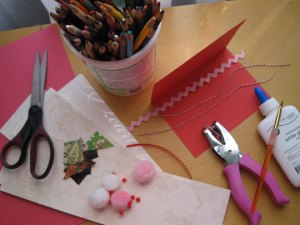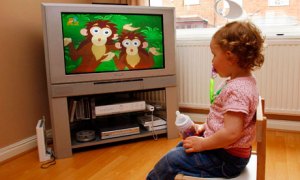 As adults, we rely on technology to help make our lives a little bit easier and sometimes we might be inclined to feel like the earlier in life our children have a grasp of technology the better off they will be. However, many thoughtful parents are weary of trusting their child’s developing minds to technologies meant to “enhance” the infant learning process.
As adults, we rely on technology to help make our lives a little bit easier and sometimes we might be inclined to feel like the earlier in life our children have a grasp of technology the better off they will be. However, many thoughtful parents are weary of trusting their child’s developing minds to technologies meant to “enhance” the infant learning process.The attached article and accompanying video is a remarkable account of the mind of child at a very early age and the role that technology plays in their life. This could potentially answer the questions originally posed by Dr. Jane M. Healy in her book, Endangered Minds, about how exactly a human child’s mind interacts with a, “machine mind” of a computer.
Remarkably, these scientists found that not only does the mind of an infant younger than 8 months have an incredible ability to decipher the differences and nuances in different languages, but that there is also a tremendous value to where the information comes from, be it a computer or a real human being. It turns out that when certain specific and identical information is presented to an infant from a computer instead of from another human being, the child absorbs NOTHING from the machine, but when that information comes from a human being, the child has the incredible capacity to comprehend language completely foreign to them. This proves that human interaction with children since they are born helps to a natural and regular development of a child brain.
When parents have to search for a caregiver to be with their children, they should have very present that the way that this person talks and interacts with the child will have a very important impact in the life of the child. This is why providing your child with exceptional childcare from informed and educated professionals is one of the most important investments you can make for the life of your child. Education at any age is not a luxury it is an essential need. Please make sure to watch the video on the page as well.
If Babies Can’t Learn Through Videos, Can Students?
It’s time for more ‘systems thinking’ about technology in education.
Babies are geniuses when it comes to learning languages. They don’t even have to try. All they need is exposure. But it turns out that when that exposure happens through a screen, these infant savants fail.
If babies can’t learn a language—something their brains do automatically—when technology is in the way or when the human touch is missing, that says a lot about what we don’t know when it comes to learning and technology.
I’m all for teaching students how to use technology and integrating software and hardwareright into the classroom when it works. But it doesn’t always work. Or more fittingly, it doesn’t work equally for all kinds of students in different circumstances, just as learning a language doesn’t work the same for young children as it does for adults.
The Limits of Technology’s Usefulness
A TED talk video posted today called “The linguistic genius of babies” exposed research that showed babies learn language through contact with real humans, but not through televisionscreens and audio recordings.
A TED talk video posted today called “The linguistic genius of babies” exposed research that showed babies learn language through contact with real humans, but not through televisionscreens and audio recordings.
Patricia Kuhl, co-director of the Institute for Brain and Learning Sciences at the University of Washington, shared some of the results of her research in the talk, which was recorded in October 2010 in Seattle, Washington, at TEDx Rainer. Infants between six months and one year old were taught how to pronounce Mandarin sounds through either audio, videos of real people with sound, or live human interaction. The babies’ ability to reproduce the sounds increased with time only when they were taught in the face-to-face setting. Babies who learned through video and audio got worse. (For more details on the methodology and experiment, see the video.)
Kuhl’s findings should remind us of the limitations of technology in learning—or at least to remember that it has plenty of advantages and disadvantages in certain situations and with certain kinds of people.
At a time when governments, non-profit organizations, and private industry are investing heavily in technology for learning and communication, from distance education to virtual business meetings, Kuhl’s talk, for me, is a slightly unnerving reality check.
Full article at pcmag.comFull article at pcmag.com
Post by: Magdalena S. Palencia






